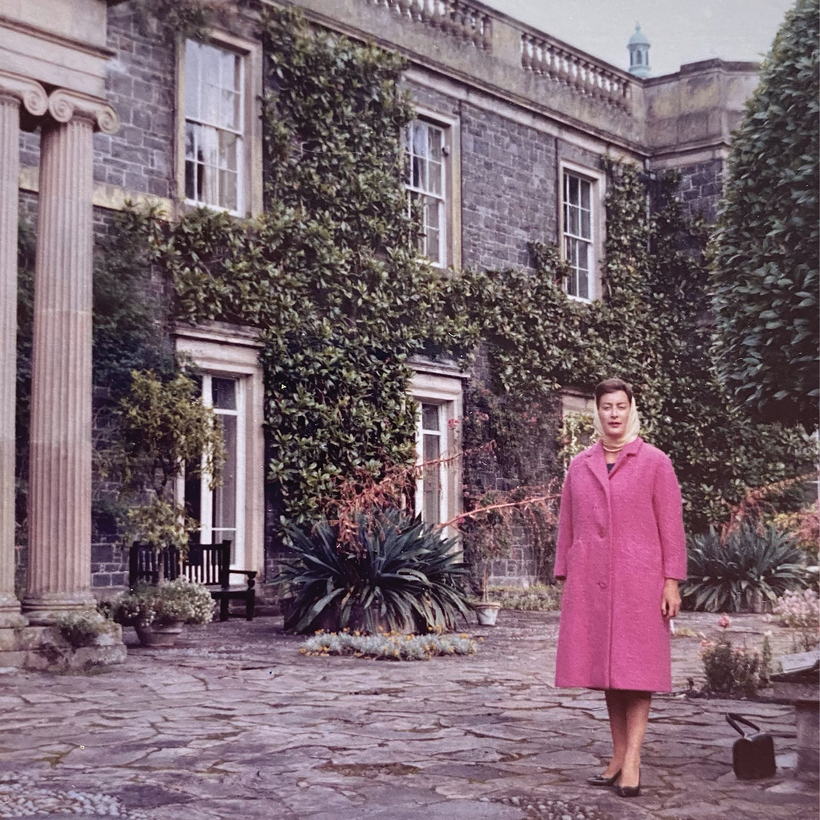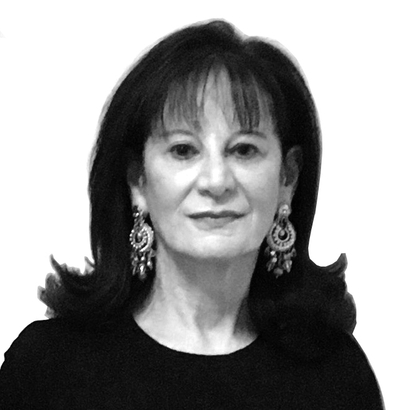It pays to be a pack rat—or, in this case, maybe a pack ermine—when your daughter comes calling about turning your life into a coffee-table book. Visiting her mother at the Grove, the relatively lesser Oxfordshire dower house from the later years of Pamela Carmen Louise Mountbatten’s marriage to the jet-setting decorator David Hicks, India Hicks sits on a favorite pink sofa for a dive into a past inseparable from a good chunk of English history. Together, they cull through memorabilia from Lady Pamela’s “muniment room,” the kind of storage or display room for historical documents and family papers commonly found on great estates.
Born in 1929, the second daughter of Lord Louis Mountbatten and the heiress Edwina Ashley, Lady Pamela knows her way around the architecture of nobility—and how to tightly shut the gates of hereditary reticence. Daughter of Empire, her 2012 memoir, forced her to overcome some of her resistance to making the personal public, but there was still plenty for her daughter to pry loose. A “persuasive assault,” Lady Pamela labels the latest of Hicks’s books, which have primarily focused on Harbour Island, in the Bahamas, and the pink-sands chic of her mini retail, hospitality, and real-estate empire there. (Lady Pamela’s release coincides with the launch of Night on the Tiles, Hicks’s latest home-goods line.)

The book is bursting with photographs, royal-wedding invitations, monogrammed datebooks, de-embargoed telegrams, and newspaper clippings bannered with victories and heartbreaks. Playdates for Pamela and her older sister, Patricia, happen at Buckingham Palace (Princesses Elizabeth and Margaret were their third cousins). George Gershwin, Noël Coward, and Fred Astaire are houseguests. Her parents’ extramarital relationships seem to just add glamour and fun to family life. There are also a pet mongoose and lion cub.
Lord and Lady Mountbatten are absent a lot, playing considerable roles in a bigger picture—a World War, its precarious run-up, and an unsettled aftermath. By 1942, Lord Mountbatten was chief of Great Britain’s Combined Operations. Lady Mountbatten rose to superintendent-in-chief of the St. John Ambulance Brigade Nursing Division, the highest wartime rank available to a woman. Hicks writes, chillingly, that after England declared war on Nazi Germany, in 1939, the Mountbattens packed their daughters off to the United States and under the care of Mrs. Cornelius Vanderbilt, “because their great-grandfather, Ernest Cassel, was Jewish.”
By war’s end, Edwina is dispatched to bear official witness to the opening of Japan’s inhumane prisoner-of-war camps, while her husband accepts the appointment of last viceroy of India. “A sticky wicket,” Prime Minister Clement Attlee blithely calls the monumental challenges facing Lord Mountbatten in overseeing India’s transition to independence and attempting to resolve the country’s roiling ethnic, religious, and political divisions.
Lord and Lady Mountbatten are absent a lot, playing considerable roles in a bigger picture—a World War, its precarious run-up, and an unsettled aftermath.
Similarly, there’s no sense of responsibility for the state of England’s dissolving empire here, and for such cataclysmal events as the carnage of partition, Lady Pamela manages only the most generalized descriptions.
As for Lady Mountbatten’s more than rumored liaison with Jawaharlal Nehru, India’s dashing prime minister, Hicks leaves it at a “deep mutual respect and affection.” And so it poshly goes among those attuned to discern the smallest gesture between Princess Elizabeth and Mountbatten’s nephew Prince Philip of Greece and Denmark. Subsequently, watching that couple process the unexpected news of King George VI’s death, Pamela clocks private anguish as well as the sudden shift in England’s fate. And just like that, she goes from royal bridesmaid to lady-in-waiting to the Queen.

The breezes of change chuffing through the postwar England that Elizabeth inherited mucked about with Pamela’s destiny, too. The “future dukes and millionaires” traditionally on marital offer lose out to “a decorator from Essex” already celebrated on the London cocktail circuit, where she meets him as a smooth social climber helping to usher in an upper-crust go-go era with boldly graphic design statements and cheeky luxe. David’s rise to fame and royal favor was meteoric, in no small measure thanks to his Mountbatten marriage. It quickly turned turbulent and troubled.
Pamela pivoted to charity work and horses, while India’s “flamboyant. eccentric” father over-extended his business into bankruptcy. The separate apartment he maintained in London flummoxed his wife with its wall-to-wall “pictures of men.” During their rows, according to his 1998 New York Times obituary, she so often threw her glasses of Coca-Cola at him that high-gloss brown walls became a staple of his design vocabulary.
Hicks says nothing about how she was affected by the turmoil. Let it be noted that she was kicked out of boarding school (Gordonstoun), followed in her mother’s footsteps as a royal bridesmaid (to Diana Spencer), and has made a life for herself that’s unconventional by Lady Pamela’s standards.
Those dynastic certainties were shaken to their core by the tragedy that looms retrospectively over even the rosiest moments of Hicks’s story. The detonation of an I.R.A. bomb in 1979 destroyed the wooden fishing boat Lord Mountbatten kept for family expeditions at Classiebawn, the beloved Mountbatten estate on the west coast of Ireland. Mountbatten was killed, along with his 14-year-old grandson Nicholas Knatchbull; Nicholas’s grandmother, Doreen Knatchbull; and Paul Maxwell, a teenage crew member. Patricia, her husband, and Nicholas’s twin, Timothy, were seriously injured.
Pamela, her daughter writes, has never returned to Classiebawn.
Celia McGee, a New York–based arts-and-culture reporter, writes regularly about books for AIR MAIL,The New York Times, and other publications


